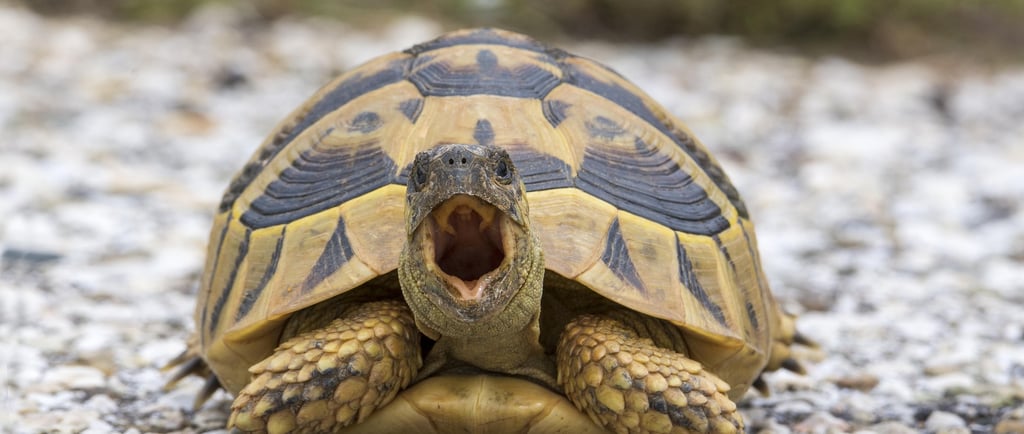🐢 The Shell That Sang 🎶 The Story of the Turtle 🎶🌍
🐢🎼 A follow-up story that bridges the Zoology chapter in the Biology Album with The Science of Sound and Musical Instruments in the Music Album. 🎶✨ This unique story invites children to discover the turtle not just as a slow-moving reptile, but as a silent bearer of ancient music. Its carapace—once shelter—became sound: turned into lyres, drums, and rattles by cultures across time and place. Children are introduced to the natural material of the turtle’s shell and how its shape resonates sound, helping them understand how early instruments were inspired by the living world. This story links biology to acoustics, ecology to culture, asking: 💭 What other instruments began their story in nature? Could we build music using gifts from the forest, shore, or field?
BIOLOGY STORIESMUSIC STORIES
6/21/20253 min read


Have you ever met a musician wearing its own instrument? Well… let me introduce you to one ! Meet the turtle—a creature as old as the dinosaurs, with a shell that tells stories of Earth, time, and even music. 🐢🌎 📜 The word turtle comes from the Latin tortuca, which evolved from tartaruchus, meaning of the underworld—because people believed turtles connected land and water, life and spirit.
Turtles have roamed the Earth for more than 200 million years, long before the first dinosaurs disappeared. They belong to a group of animals called reptiles. That means they have scaly skin, breathe air, and usually lay eggs. But there’s something that makes turtles very different from all other reptiles: their shell! This isn’t something they take off or crawl out of—it’s part of their body.
The top part is called the carapace (👏 ca 👏 ra 👏 pace), from Spanish carapacho for “hard shell,” and the bottom part is called the plastron (👏 plas 👏 tron) from Latin plastrum, related to “a protective plate.” . Together, they grow with the turtle—strong and curved like a living shield. 🛡️✨
That shell is made of bone and keratin—the same material as our fingernails. And it’s not just for protection; it’s part of the turtle’s skeleton! The spine and ribs are fused into the carapace, making it like a house built from the turtle’s own bones. Imagine carrying your home everywhere you go! 🏠🐢
There are land turtles (like tortoises), freshwater turtles, and sea turtles. Some move slowly through sandy deserts, others glide silently through rivers, and some dive through the ocean like flying stones. Their shells can be high and domed, flat and smooth, or even shaped like puzzle pieces! 🌊🌵🏞️
But here’s where our story gets musical… 🪕🎵
Across ancient cultures, turtles inspired not only myths and calendars, but also… instruments. In Ancient Greece, when the plastron was removed and the carapace carefully cleaned, it created a natural resonating bowl. 🥁🎶 Strings could be stretched across it—voilà! One of the earliest names was the sambuca (👏 sam 👏 bu 👏 ca), an ancient stringed harp-like instrument, named after the curved shell it was made from. 🎼 The turtle didn’t just walk the Earth—it became part of human celebration, memory, and music.. 🎶🐢
🎵 In West Africa, especially in Ghana and Nigeria, some traditional drums were once made with turtle shells stretched with hide, used in ceremonies to echo the rhythms of life. 🪘 In Native American cultures, turtle shells were used to make rattles. The Cherokee, Iroquois, and others filled empty shells with pebbles or seeds and tied them to legs or arms to make music while dancing—honoring the turtle as part of both Earth and rhythm.
Later in Mesoamerican civilizations like the Aztecs, musicians used turtle shells to make ayotl drums. (👏 a 👏 yo 👏 tl) 🥁 Placed upside down and gently tapped with padded sticks, the turtle’s shell created deep, echoing sounds used in ritual dances, storytelling, and ceremonies to honor water, life, and the Earth. The word “ayotl” in Nahuatl, the Aztec language, simply meant turtle—but it also meant sound. They were associating turtles with music.
In many cultures, turtles were seen as wise and patient creatures—symbols of the Earth itself. Some Native American stories speak of the world being built on the back of a great turtle. 🌏✨
💭 I wonder… Could we make music with natural materials around us, like people once did with turtle shells? Can you make your own drum? Or you would like to research more about turtle instuments from all over the world.
✨Possible Follow-Up Explorations✨
🎼 Music & Material History
Research what other instruments ancient cultures made from animal materials:
Horns from goats or cows
Bones used for flutes
Shells and gourds for drums
Compare these to today’s instruments. What has changed?
🪕 Instrument Timeline
Build a timeline of ancient instruments across cultures. Add the sambuca and ayotl. How do instruments evolve over time?
👀 Observation and Drawing
Study a turtle’s anatomy.Draw it from above and below. Label the parts.
If possible, visit a pond or sanctuary and quietly observe turtles in their habitat.
How does a turtle breathe if it’s always inside a shell? What other animals carry their homes on their backs?
🗺️ Mapping Music: The Musical World Turtle
Make a world map and trace where turtle-shell instruments were once played:
Mesoamerica (ayotl drum), Ancient Greece (sambuca), West Africa (ceremonial drums), North America (shell rattles)
With Montessori joy,
Vanina 😊

